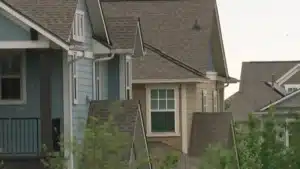Here’s what you need to know about Austin Real Estate today:
Real Estate Development and Housing Market Trends
Austin gave low-income residents $1,000 a month with no strings attached. One participant said the payments helped her get her first permanent apartment.
Source: Central Texas Real Estate Journal
Summary: This article explores the current trends in Central Texas’s real estate market, noting a significant increase in both residential and commercial property demands. Driven by a thriving economy, major tech influx, and population growth, the region is witnessing a real estate boom like never before. The rising interest in farmland and industrial real estate is also emphasized, showing an exciting new direction for investors. The report suggests that these trends are expected to persist, creating numerous opportunities for stakeholders in the real estate sector.
Why this matters: Understanding these dynamics in Central Texas’s real estate market can help our readers create strategic investment plans, cater to their clients’ needs more effectively, and capitalize on the region’s growth for their career advancement.
2018 affordable housing bond dollars now spent. Here’s what Austin got for them
Source: KXAN
Summary: Austin has successfully spent all of its 2018 affordable housing bond dollars, totaling $250 million. Over this period, according to HousingWorks Austin, 8,363 homes were built, with nearly 4,500 designed for very low-income families. The focus now shifts to the 2022 bond, which is expected to last until approximately 2028. Importantly, the city has been able to stretch these funds by leveraging each dollar of bond money to raise $6.50 from other sources, including the federal government, philanthropy, and other investors.
Why this matters: Understanding the impact of Austin’s bond programs on affordable housing provides insights into the city’s real estate market dynamics, enabling readers to better serve low-income clients and anticipate future housing market trends.
Taurus, AOG Living Break Ground on 348-Unit Multifamily Project in East Austin
Source: REBusinessOnline
Summary: Taurus Investment Holdings and AOG Living have commenced construction on The Evergreen at Whisper Valley, a significant 348-unit multifamily project located in East Austin. This development, designed by The Sage Group, is part of the Whisper Valley master-planned community which spans 2,670-acres. The property will incorporate one, two, and three-bedroom units alongside amenities such as a pool, fitness center, resident clubhouse, business center, beer garden, dog park, and nature trails. Furthermore, residents will have access to a vast 600-acre public park. The project’s completion is expected in spring 2025.
Why this matters: This article is particularly relevant as it highlights a significant new development in East Austin that real estate professionals can leverage to attract prospective clients. Furthermore, the insight into the variety of amenities and access to green spaces can serve as a selling point for those catering to clients looking for residential properties offering a comprehensive lifestyle experience.
Related Hoping to Go 50-Stories in Austin
Source: Connect CRE
Summary: The Related Cos. plans to construct a significant multi-tower project across from Ladybird Lake in Austin’s South Central Waterfront District, an area expected to transform into a dense, walkable neighborhood in the coming years. The development is projected to reach heights of 575 feet, or around 50 stories, offering approximately 800 residential units, a 225-room hotel, and considerable retail and office space. This endeavor will be funded partly through a Tax Increment Reinvestment Zone (TIRZ), a financing tool supporting redevelopment in specific regions.
Why this matters: This noteworthy development project in Austin’s South Central Waterfront District will be a key catalyst in the area’s transformation, and understanding its scale, purpose, and financing can provide real estate agents with valuable insights for advising clients on potential investment and residential opportunities.
Socioeconomic Initiatives and Community Impact
Texas launches new property tax break program to replace Chapter 313
Source: Community Impact Newspaper
Summary: The state of Texas is launching a new property tax break program aimed at attracting businesses to the state. This initiative, known as the Jobs, Energy, Technology and Innovation program, is a replacement for Chapter 313, which expired in 2022. The new program offers eligible manufacturing, research, and development companies a 10-year reduction in property taxes. To qualify, projects must create new jobs with health benefits and competitive wages. Unlike the previous program, the new initiative includes a 50% tax reduction, and projects in federally designated “”opportunity zones”” will be eligible for a 75% tax abatement. The program is set to expire at the end of 2033.
Why this matters: The launch of Texas’ new tax break program underscores the state’s continued commitment to attract businesses, offering real estate professionals a unique opportunity to market properties towards these qualifying companies, ultimately fueling economic growth and creating new jobs in the region.
Cultural and Social Highlights
Beloved theatre company gets first permanent home in 16 years in Austin suburb
Source: Austin Culture Map
Summary: Penfold Theatre Company, after operating transiently for 16 years in Austin, has received a $326,330 Arts Grant from the Round Rock City Council to establish a permanent home at Rock Creek Plaza. The grant, funded by the hotel occupancy tax, will cover 18 months of rent for the theatre company, which expects to open its venue in fall 2024. Penfold’s new space will be used not only for its award-winning productions but will also provide affordable rental space for other local arts organizations. The theatre company is still seeking $65,000 in funds for additional rennovations.
Why this matters: The establishment of Penfold Theatre’s permanent space in Round Rock represents an exciting opportunity for real estate professionals in the area, as increased cultural activity can enhance neighborhood attractiveness and potentially boost property values, which they can leverage to deliver value to their clients.









